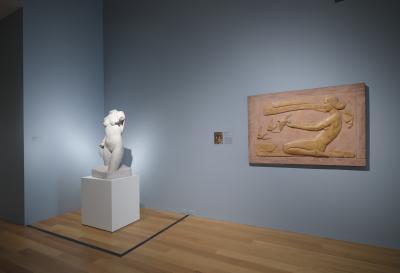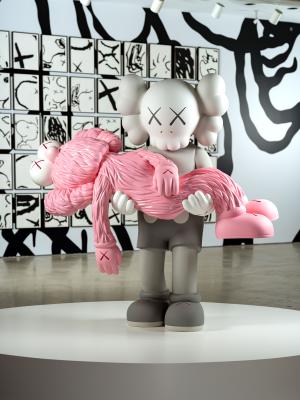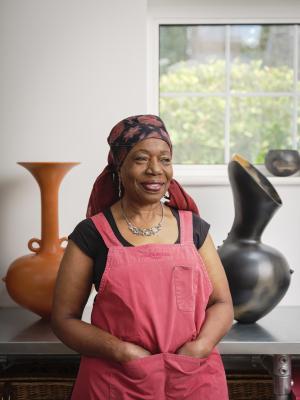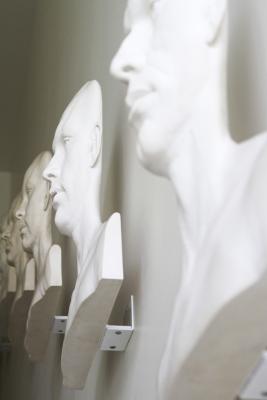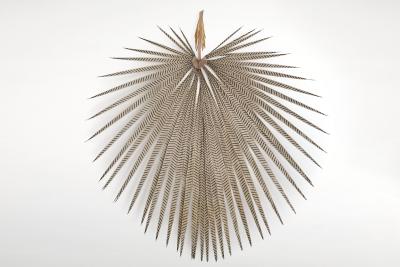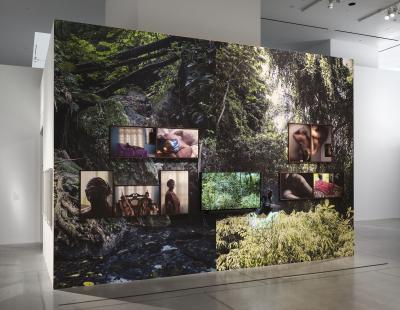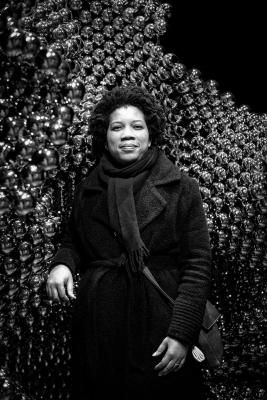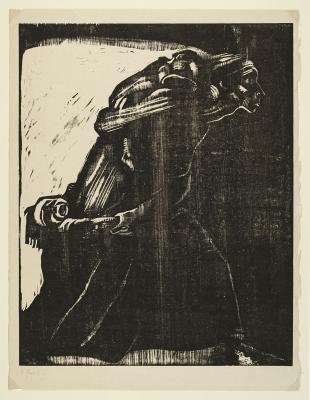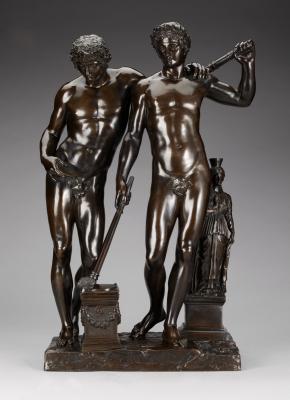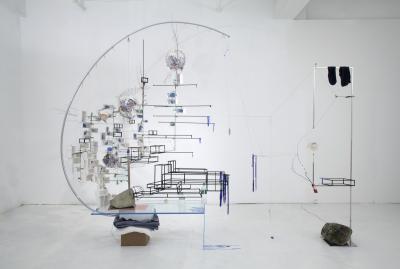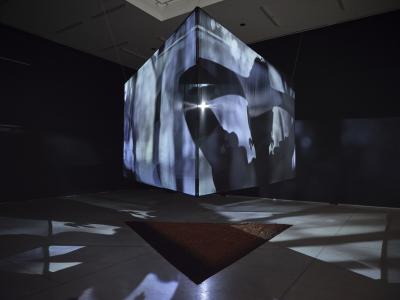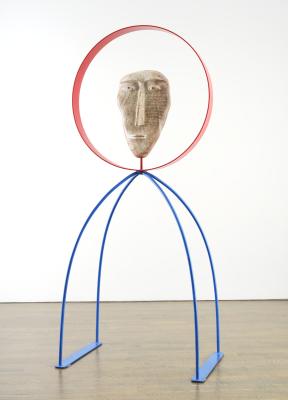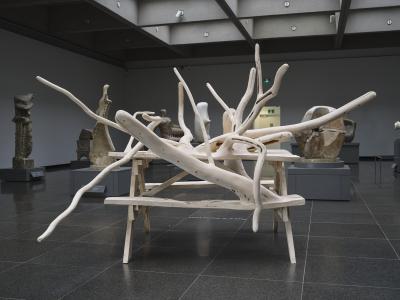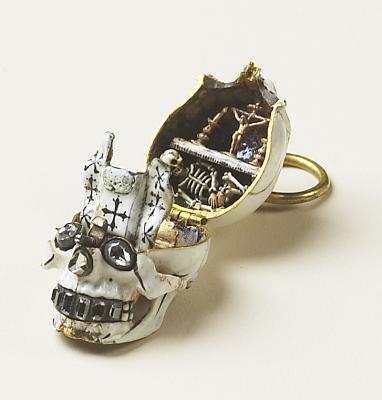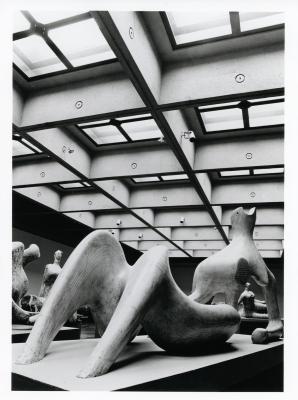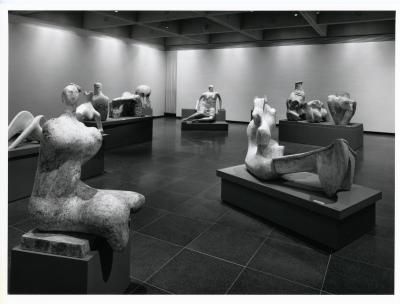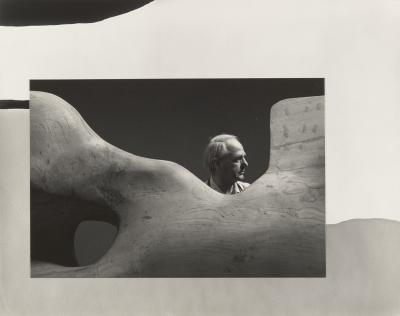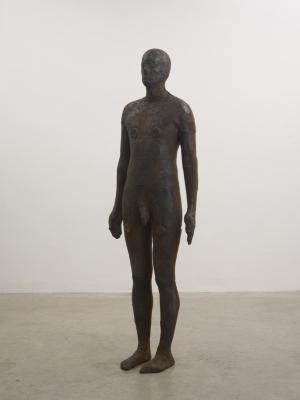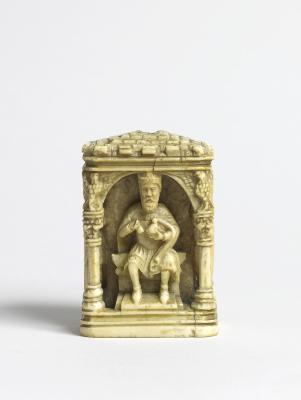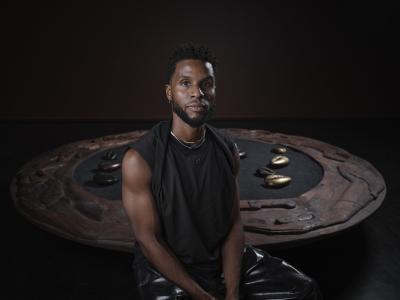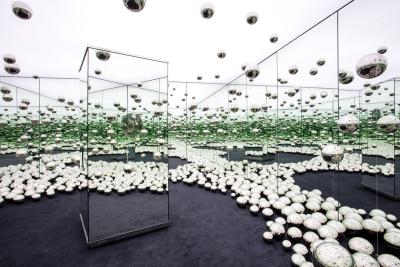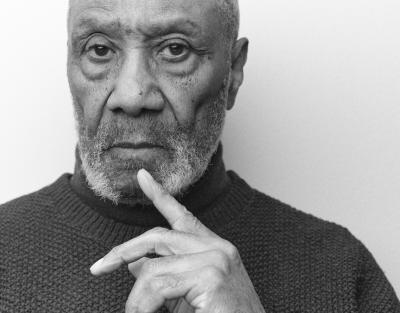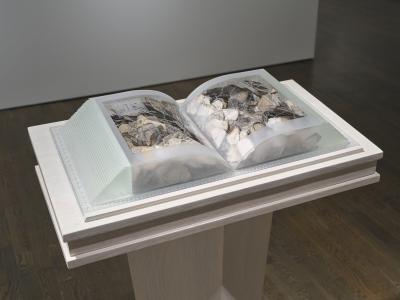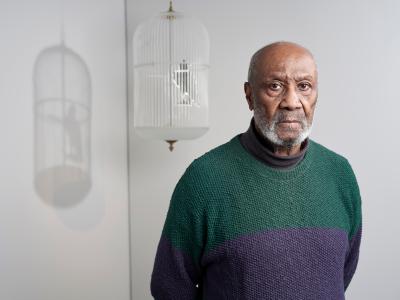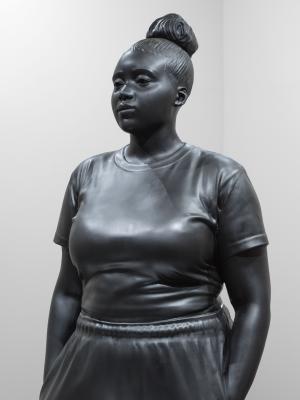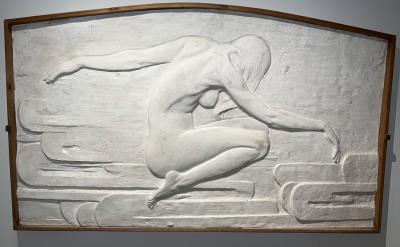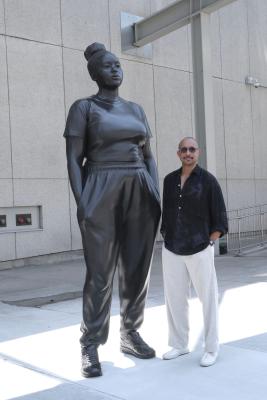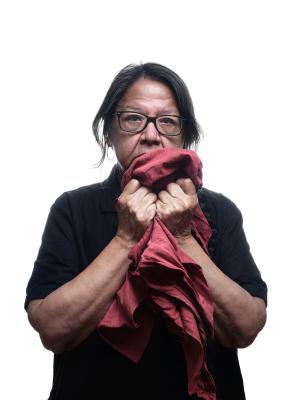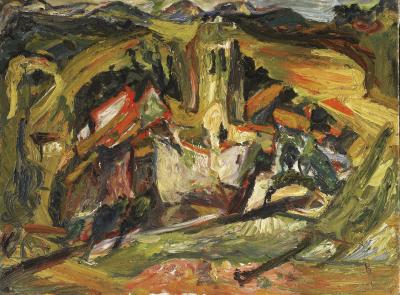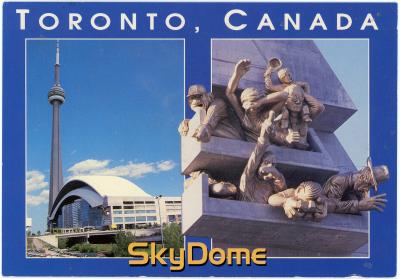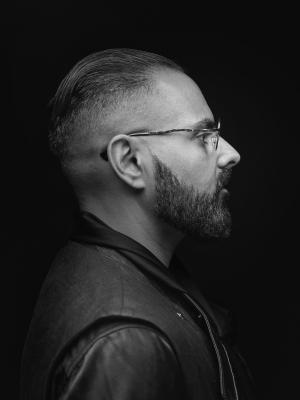Moore In Time At The AGO
The Henry Moore Sculpture Centre turns 50. Take a trip back in time with these memorable moments

Henry Moore Sculpture Centre, 1974. AGO Photographic Collection. Edward P. Taylor Library & Archives, Art Gallery of Ontario. Photo # 4816. Reproduced by permission of The Henry Moore Foundation / © The Henry Moore Foundation
If you’ve visited the AGO in the past five decades, chances are you encountered works made by renowned British artist Henry Moore (1898 – 1986).
Whether you’ve spent a contemplative moment in the Henry Moore Sculpture Centre or met up with a friend at Large Two Forms at the corner of Dundas and McCaul Streets or in Grange Park, his influence on the history of the AGO is undeniable.
Home to the largest public collection of Moore artworks in the world, the AGO’s Henry Moore Sculpture Centre was designed by Toronto architect John C. Parkin in partnership with Moore, specifically for the permanent display of his works. The Moore Centre hosts rotating selections of his prints and drawings, plasters, and examples of his bronze casts and direct carvings in stone and wood.
Fall 2024 marks the 50th anniversary of the Moore Centre. This timeline highlights key moments in that history and includes some AGO exhibitions featuring Moore’s work. It also includes moments when contemporary artists have responded to and engaged with both his work and the space of the Moore Centre.
1951 – The AGO (then known as the Art Gallery of Toronto) acquires Working Model for Upright Internal and External Forms (1951) by Henry Moore. This is the first sculpture by the artist to enter the AGO Collection.
The acquisition was made possible with support from the Women’s Committee Fund. Moore said of this sculpture, “I suppose in my mind was also the mother-and-child idea and birth and the child in embryo. All these things are connected in this interior and exterior idea.”
1956 – Henry Moore’s work is included in a series of circulating exhibitions titled Sculpture and Paintings from Britain, along with fellow artists such as Barbara Hepworth.
As you enter the Moore Centre today, Moore’s figurative sculpture Seated Figure (1930) is on view beside Barbara Hepworth’s Mother and Child (1927). Moore and Hepworth were longtime friends, and both contributed to the development of twentieth-century sculpture in major ways.
1966 – Three Way Piece No.2: Archer (1964-5), commonly known as The Archer, by Henry Moore, is unveiled in Nathan Phillips Square beside Toronto’s new City Hall.
It was through this project that Moore connected with the city of Toronto.
Viljo Revell, the Finnish architect for Toronto’s City Hall, suggested that Moore create a sculpture that could complement the new city hall and civic square. Revell and Moore had a budding friendship at the time and admired each other’s work.
Moore agreed, and after Revell’s death in 1964, the project moved forward but not without intense public debate. Many in the city felt that it was a misuse of public funds, and others didn’t quite grasp Moore’s abstract sculptures.
After the City Council declined to fund the purchase, Toronto Mayor Philip Givens raised the money through private donations. This initiative is often given as the reason Givens lost the next mayoral election.
That year, the Art Gallery of Toronto officially changed its name to The Art Gallery of Ontario (AGO).
1967 - Moore visits Toronto for the first time to see The Archer.

Henry Moore in front of Three Way Piece No. 2: Archer in his first visit to Toronto, March 1967. AGO Photographic Collection. Edward P. Taylor Library & Archives, Art Gallery of Ontario. Reproduced by permission of The Henry Moore Foundation / © The Henry Moore Foundation.
In the text Henry Moore Remembered, Alan G. Wilkinson, who would later become the curator responsible for the Henry Moore Sculpture Centre, also recounted meeting Moore for the first time this year in Ottawa while he was researching Moore’s work for his doctoral thesis. The two would go on to have a friendship and working relationship that lasted until Moore’s death. Wilkinson was instrumental in developing the Moore Centre and maintaining the connection between Moore and the AGO in the years after it opened.
The AGO exhibition Henry Moore: The Last Decade highlights Moore’s recent works at the time and tours other museums across Canada.
Also, Samuel J. Zacks, AGO President (1966 to 1968) and William Withrow, AGO Director (1961 to 1991), began discussing with Moore the possibility of the Gallery obtaining a significant number of his works and creating a designated space for them to be housed and displayed in Toronto. Moore initially considered donating his works to the Tate Gallery in London.
1968 – Moore commits to gifting the AGO a number of his works.
Moore wrote in a letter dated December 9, 1968, to Edmund C. Bovey, AGO President (1968 to 1970), “This letter is to say that it is my firm intention to donate to the Art Gallery of Ontario a sufficiently large and representative body of my work to make it worthwhile building a special pavilion or gallery for its permanent display.”
1969 – Wilkinson is named curator of what would eventually become the Henry Moore Sculpture Centre and the collection of Moore works at the AGO.
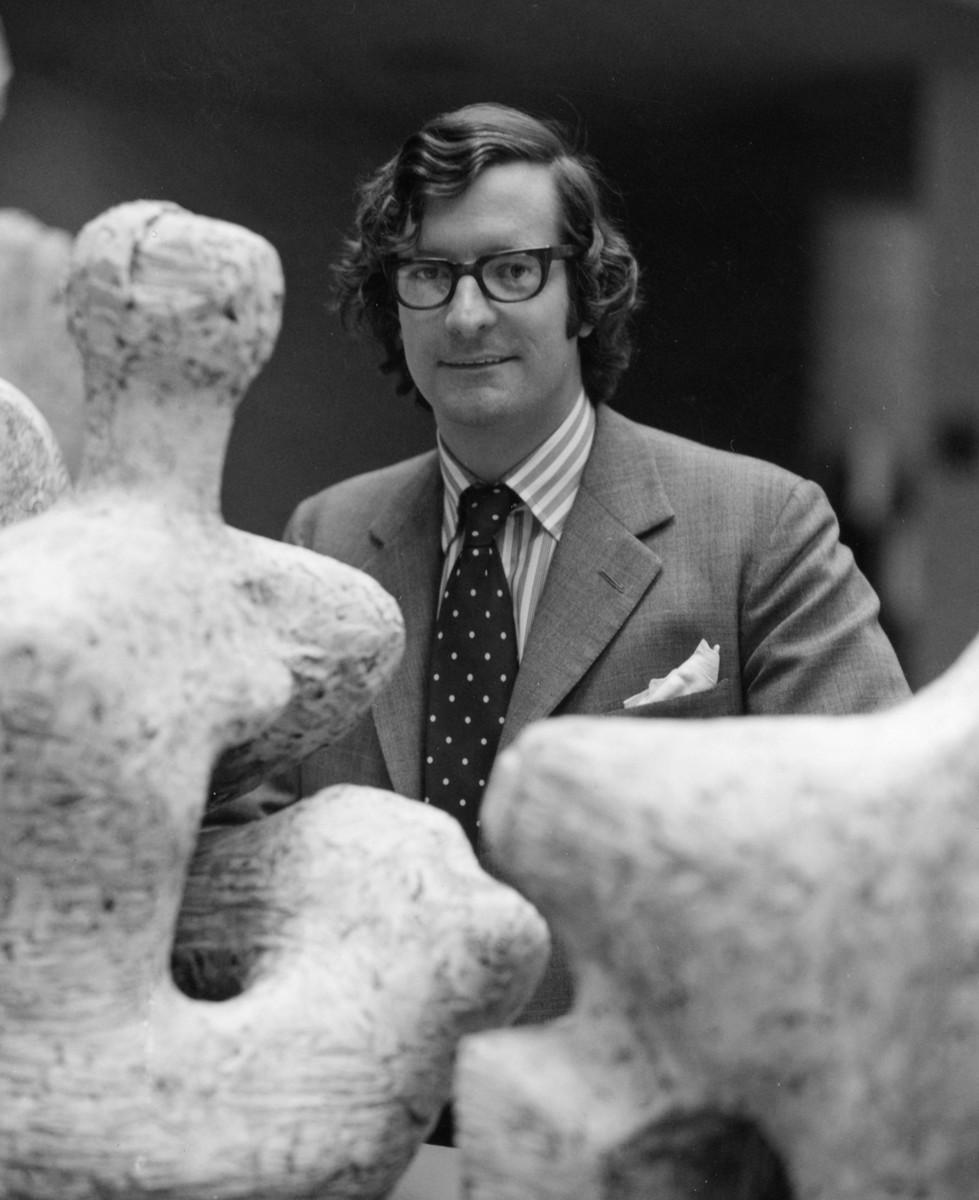
Alan Wilkinson in the Henry Moore Sculpture Centre. AGO Photographic Collection. Edward P. Taylor Library & Archives, Art Gallery of Ontario. Reproduced by permission of The Henry Moore Foundation / © The Henry Moore Foundation
1973-1974 – Moore donates an unprecedented number of works to the AGO. The Henry Moore Sculpture Centre opens to the public in phase one of a major expansion. Large Two Forms (1966-1969) finds its first home at Dundas and McCaul Streets in Toronto.
Moore fulfilled his promise and generously donated a vast collection of his work to the AGO, including 101 sculptures, 57 drawings and 150 prints. This gift effectively made the AGO home to the world’s largest public collection of his work.
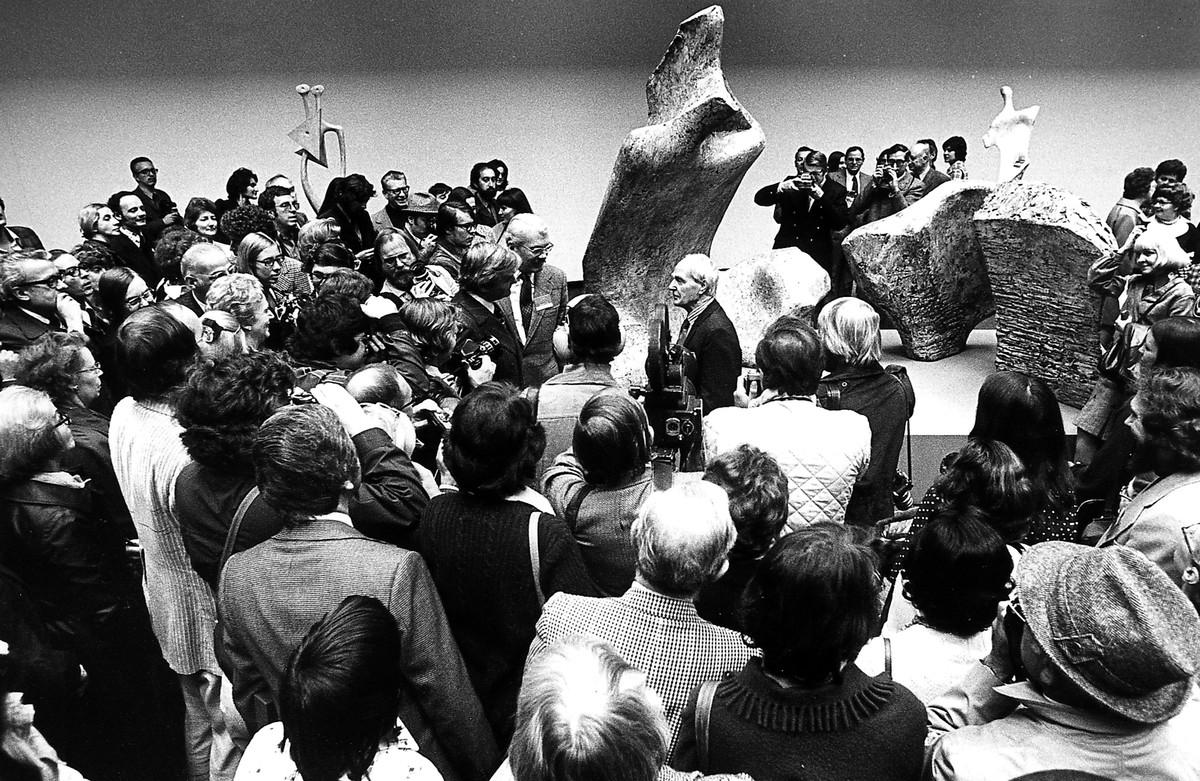
Henry Moore with press and the public at the Henry Moore Sculpture Centre, October 1974. AGO Photographic Collection. Edward P. Taylor Library & Archives, Art Gallery of Ontario.
The Moore Centre officially opened on Level 2 of the Gallery on Saturday, October 26, 1974. Moore collaborated with Toronto architect and architect for the AGO’s expansion project, John C. Parkin, to design the 10,000 sq. foot exhibition space. The natural lighting and reflective flooring were intentional choices made to contrast the heavy works with a sense of lightness and to make the works appear as though they were floating on a pond. Like The Archer at City Hall, the Moore Centre was criticized by those who believed that the display of work by Canadian artists should take precedence.
Under Moore’s direction, Large Two Forms was also installed at Dundas and McCaul Streets. Moore’s trusted assistants, John Farnham, Michael Muller and Malcolm Woodward, were all involved with installing the eight-tonne bronze sculpture and plasters in the Moore Centre itself.
Beyond the initial 1974 gift, the Gallery continued to add works by Moore to its collection. Not only did the inception of the Moore Centre help further cement Moore’s legacy as a world-renowned artist, but it also established a lasting relationship between Moore, the Gallery and the city of Toronto.
1976 – The exhibition Henry Moore Sculpture, Prints, Drawings and Photos opens at the AGO.
1977 – The AGO and the Tate Gallery, London, organize the first retrospective of Moore’s drawings with an exhibition titled Drawings of Henry Moore.
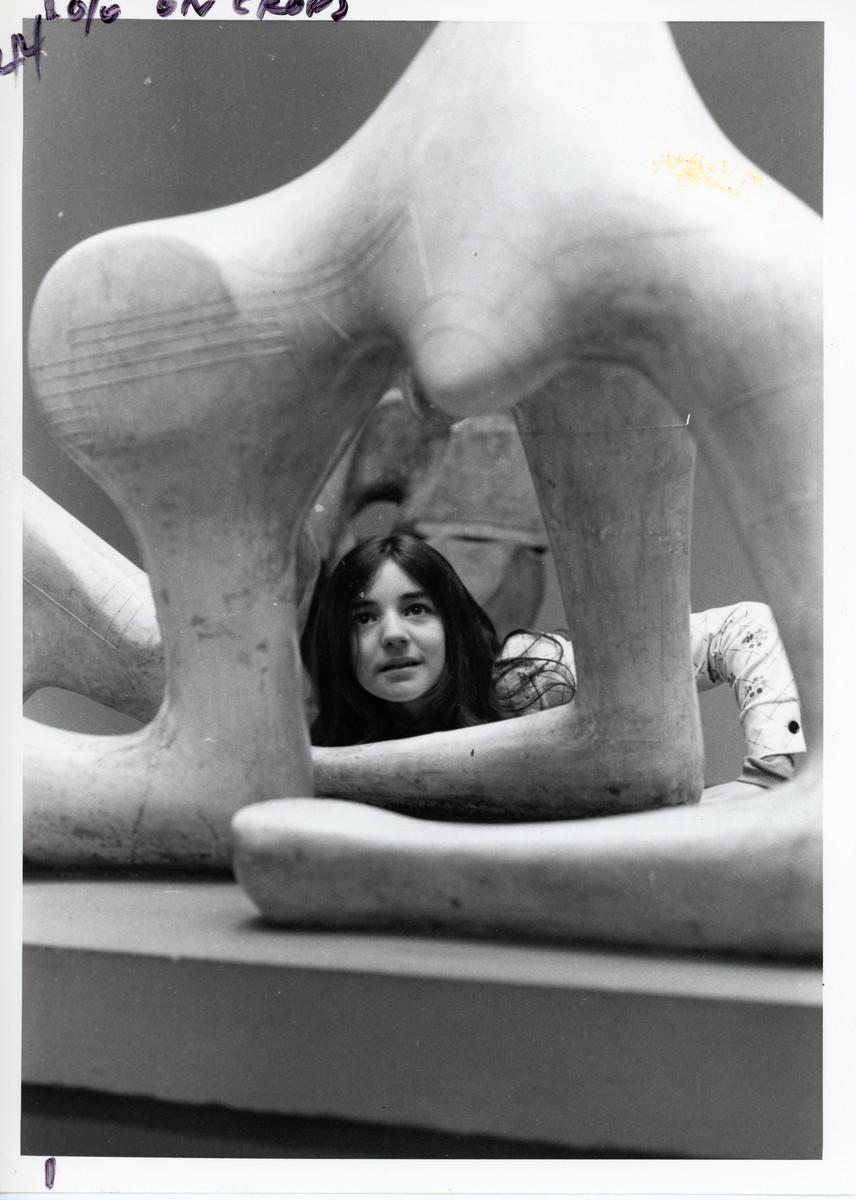
Upper Thames Elementary School Visit to the Henry Moore Sculpture Centre, looking at Reclining Figure (1951), June 23, 1978. AGO Photographic Collection. Edward P. Taylor Library & Archives, Art Gallery of Ontario. Photo # 10717. Reproduced by permission of The Henry Moore Foundation / © The Henry Moore Foundation
1980 – The Henry Moore Sculpture Centre Committee becomes the Modern Sculpture Committee. This committee acquires works by other prominent sculptors such as Paul Gauguin, Pablo Picasso, Constantin Brancuși and others for the AGO Collection.
1981 - 1986 – Multiple exhibitions featuring Moore’s work from the AGO Collection open: Gauguin to Moore: Primitivism in Modern Sculpture [1981-1982], A New Dimension: Tapestries and Watercolors by Henry Moore [1985], Henry Moore: Sculptures, Drawings and Prints from the Collection of the Art Gallery of Ontario [1985-1986], Henry Moore Drawings from the Permanent Collection [1985], Contact: Henry Moore: Shelter Sketch-Book Portfolio [1986-1987].
1986-1987 – Henry Moore remembered.
Moore died at the age of 88 in 1986. The following year, on the anniversary of his death, the AGO published Henry Moore Remembered: The Collection at the Art Gallery of Ontario in Toronto, written by Wilkinson. The exhibition Henry Moore Remembered also opens the same year.
The volume Henry Moore Remembered: The Collection at the Art Gallery of Ontario in Toronto details the establishment of the Moore Centre and Moore’s contributions to modern art. The exhibition Rodin to Moore: Sculpture from the Collection of the Art Gallery of Ontario, also curated by Wilkinson, opens at the AGO.
1990 - Henry Moore's Animals: Prints from the Permanent Collection of the Art Gallery of Ontario opens.
2001 – Humanity Refigured: Henry Moore and Postwar British Sculpture tours Ontario.
Ushering Moore into the twenty-first century, this exhibition features sculptures by Moore and some of his younger British contemporaries from the AGO Collection, like Kenneth Armitage, Reg Butler and Lynn Chadwick.
2010 – The exhibition The Shape of Anxiety: Henry Moore in the 1930s opens at the AGO. The exhibition is co-organized with Tate Britain.
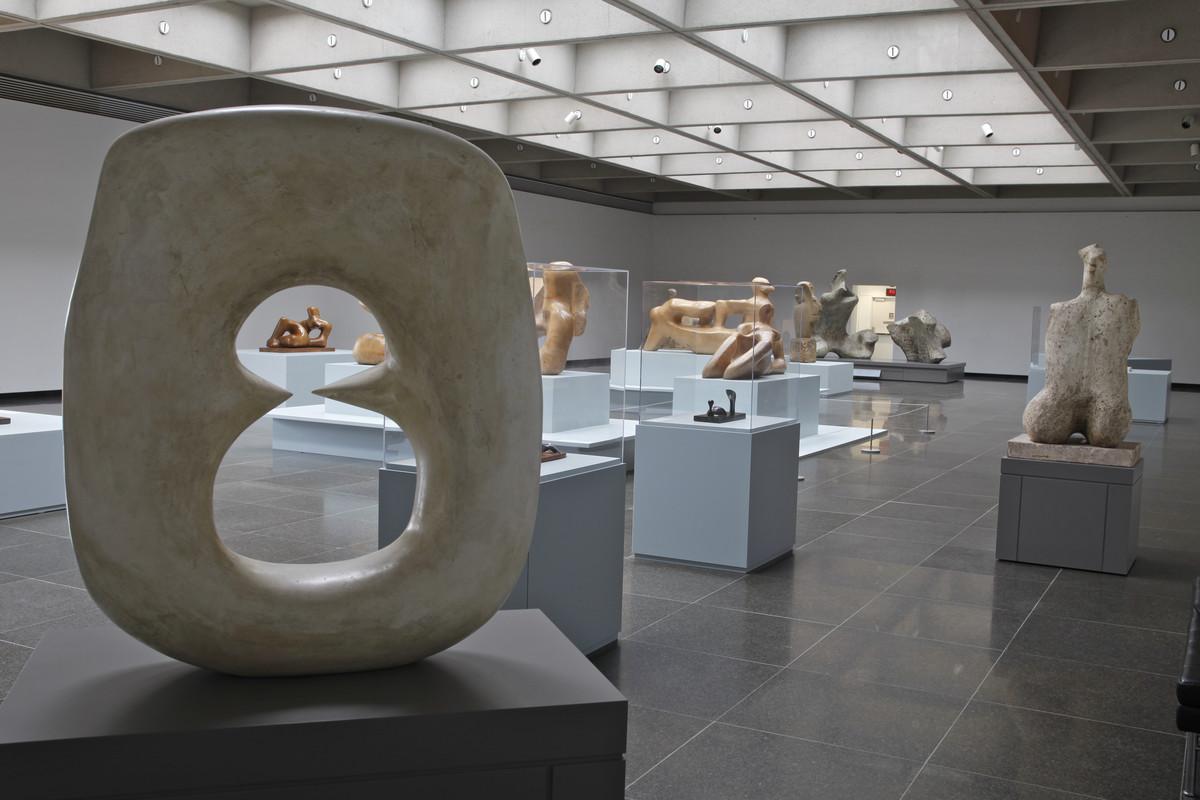
Installation view, The Shape of Anxiety: Henry Moore in the 1930s, October 23, 2010 – February 6, 2011. Henry Moore Sculpture Centre, Art Gallery of Ontario.
2011 – Brian Jungen wins the Gershon Iskowitz Prize in 2010. In 2011, he chose to display a new series of sculptures, Tomorrow, Repeated, in the Moore Centre. This is one of many interactions by contemporary artists with the Moore Centre.
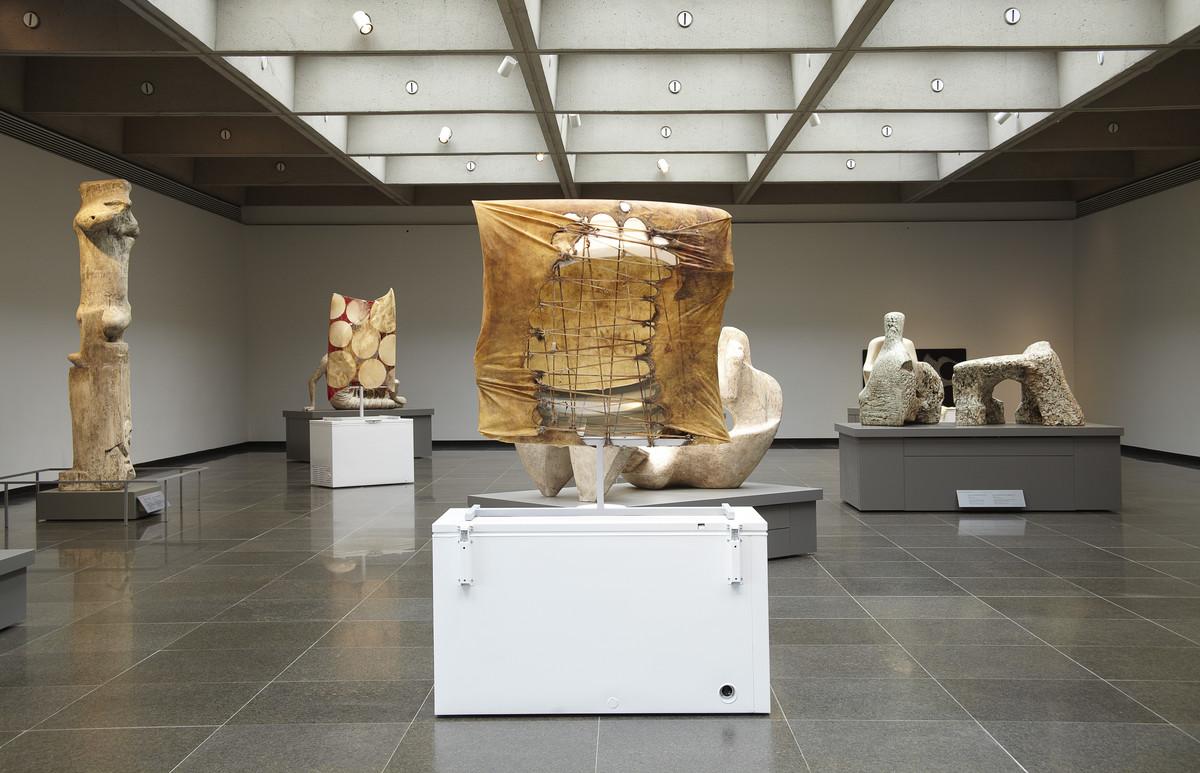
Installation view, Brian Jungen: Tomorrow Repeated, May 5 - August 7, 2011. Henry Moore Sculpture Centre, Art Gallery of Ontario. Artworks: © the artists. Photo © AGO.
Inspired by his time with his family in Northern B.C., Jungen used materials common in Northern communities, including elk hides, car parts and deep freezers. He continues this series for a large international exhibition in Germany.
Jungen created Couch Monster: Sadzěʔ yaaghęhch’ill, another massive bronze sculpture installed at the Dundas and McCaul Streets in homage to Moore eleven years later.
2014 – The exhibition Francis Bacon and Henry Moore: Terror and Beauty opens at the AGO.
This exhibition features over 130 works by Bacon and Moore, emphasizing both artists’ influence on twentieth-century British art. Terror and Beauty highlighted the artists’ experience of conflict, including the London Blitz during the Second World War, which impacted their creativity. The exhibition featured rarely seen works by Moore.
2014 – Geoffrey Farmer wins the Gershon Iskowitz Prize in 2013. In 2014, Geoffrey Farmer: Every day needs an urgent whistle blown into it goes on view in the Moore Centre.
As part of his AGO exhibition, Every day needs an urgent whistle blown into it, he opts to restore the working models and plaster originals in the Moore Centre back to their original 1974 configuration. Farmer noted, “Unlike their bronze counterparts, these works are fragile and need the protection of a climate-controlled environment. When moved, they are at risk of forming fissures and cracks. They appear to me like figures resting in an infirmary, somewhat reminiscent of the skylit boneyard Moore created in his studio, which was the resting place for the shells, rocks and bones he collected.”
2016 – Large Two Forms (1966-1969) moves from Dundas and McCaul Streets to Grange Park.
Large Two Forms spent 42 years at Dundas and McCaul streets, becoming a kind of cultural landmark in the city. In 2016, it moves to a new home behind the Gallery in the recently revitalized Grange Park. Moore once said, “Sculpture is an art of the open air. Daylight and sunlight are necessary to it, and for me, its best setting and complement is nature.”
Also, this year, the AGO began a conversation with Jungen about creating a large-scale outdoor sculpture.
2021 – A towering bronze sculpture by Thomas J. Price, titled Within the Folds (Dialogue 1) (2020), is temporarily installed at Dundas and McCaul Streets.
2022 – In a tribute to Moore, Jungen’s Couch Monster: Sadzěʔ yaaghęhch’ill is installed at the corner of Dundas and McCaul Streets.
Jungen’s new public artwork lives at the corner of Dundas and McCaul streets, right where Large Two Forms once was. Like Large Two Forms, Couch Monster is made with bronze. It is the AGO’s first public art commission.
Jungen has long admired and engaged with Moore’s work. He noted that “bronze becomes more beautiful over time and comes to resemble leather, a material that I have worked with extensively in the past.”
2024 – Hugh Hayden’s Can’t we all just get along (2020) goes on view in the Moore Centre.
2024 – The Henry Moore Sculpture Centre turns 50.
The Moore Centre continues to be a cornerstone of the AGO Collection and a visitor favourite five decades after its inception. On Wednesday, November 13, join us to celebrate the 50th anniversary of the opening of the Moore Centre with a conversation between Adam Welch, AGO Associate Curator, Modern Art, Lisa Ellis, AGO Conservator, Sculpture and Decorative Arts and James Copper, Henry Moore Foundation Sculpture Conservator.
For tickets, visit here: https://ago.ca/events/henry-moore-ago-50-years
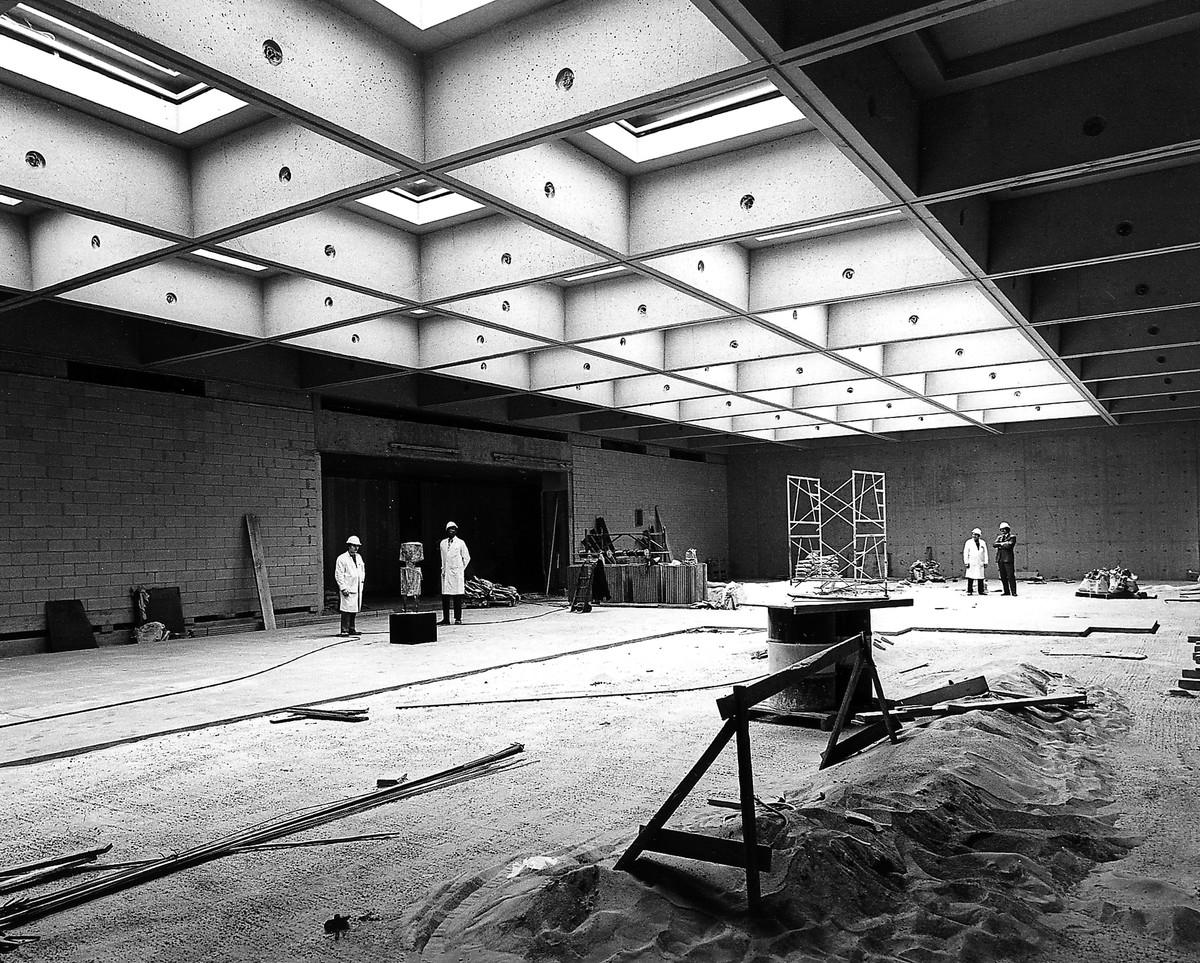

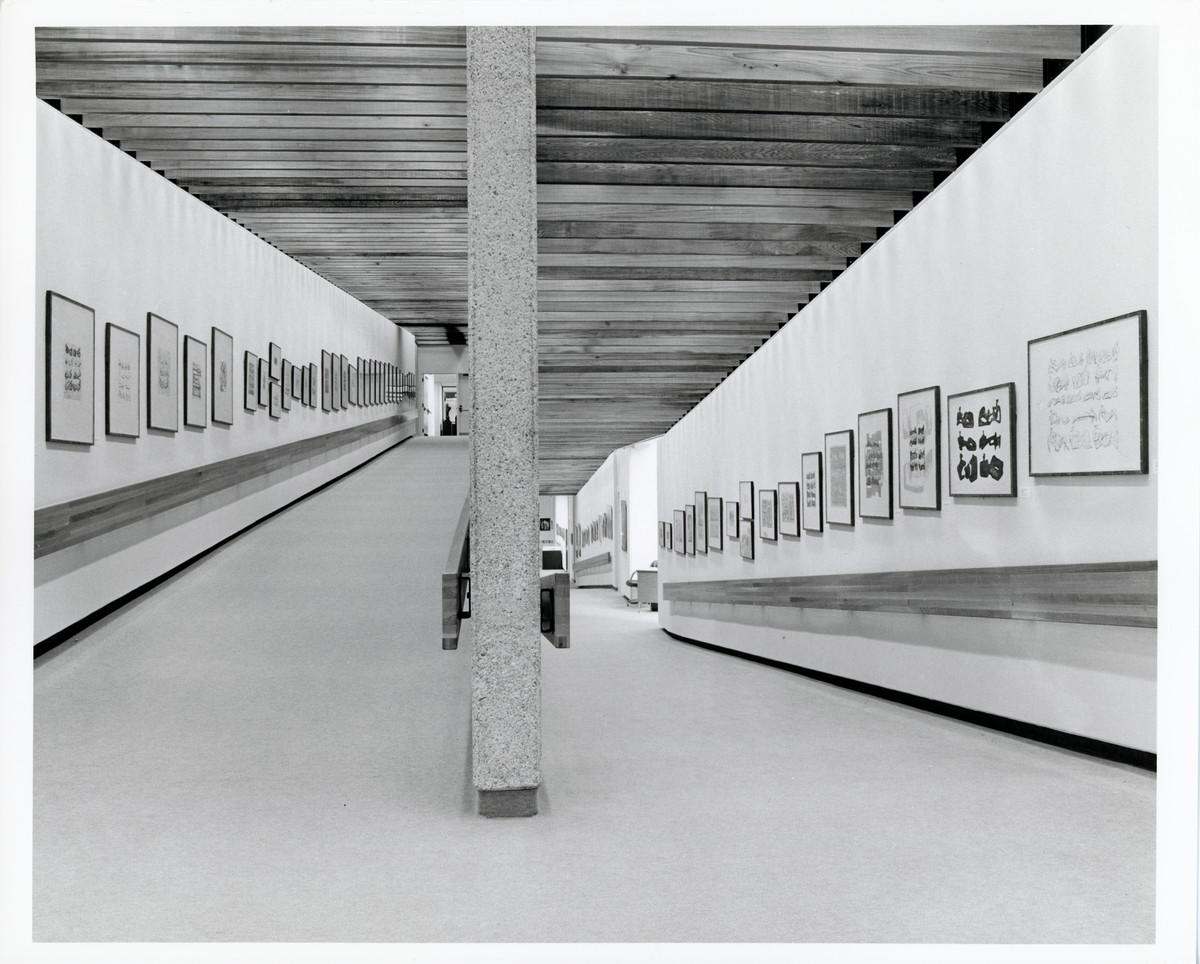
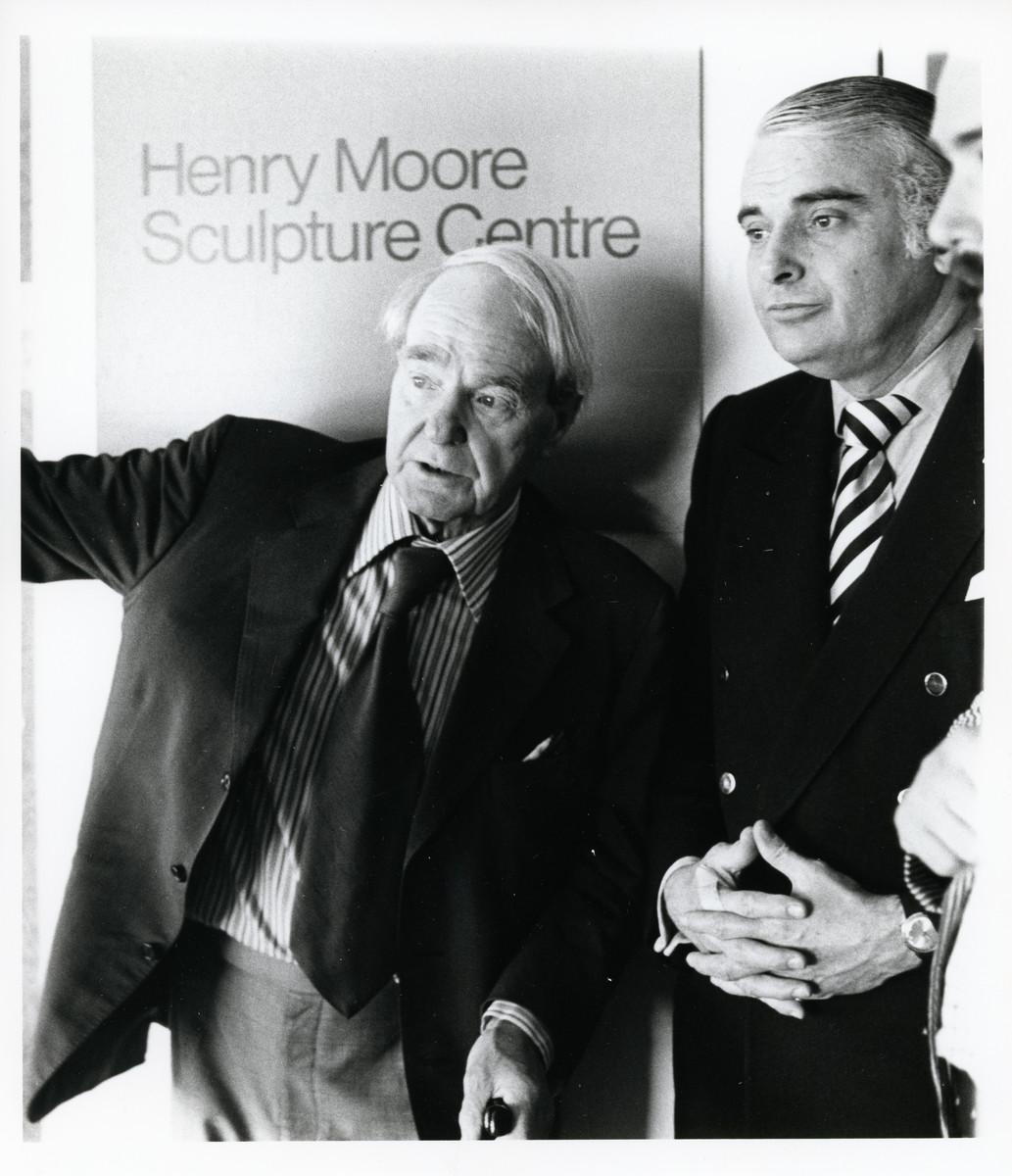
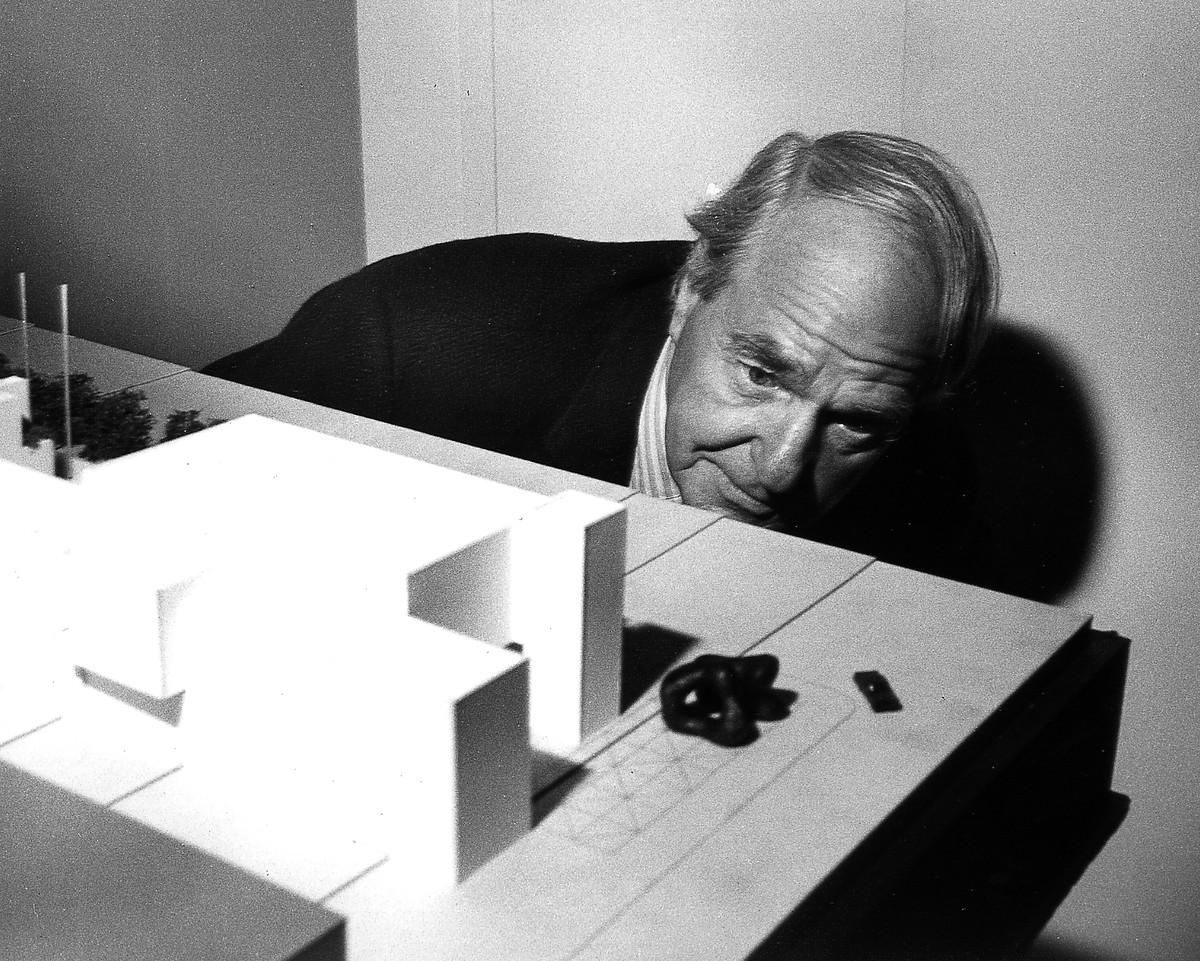
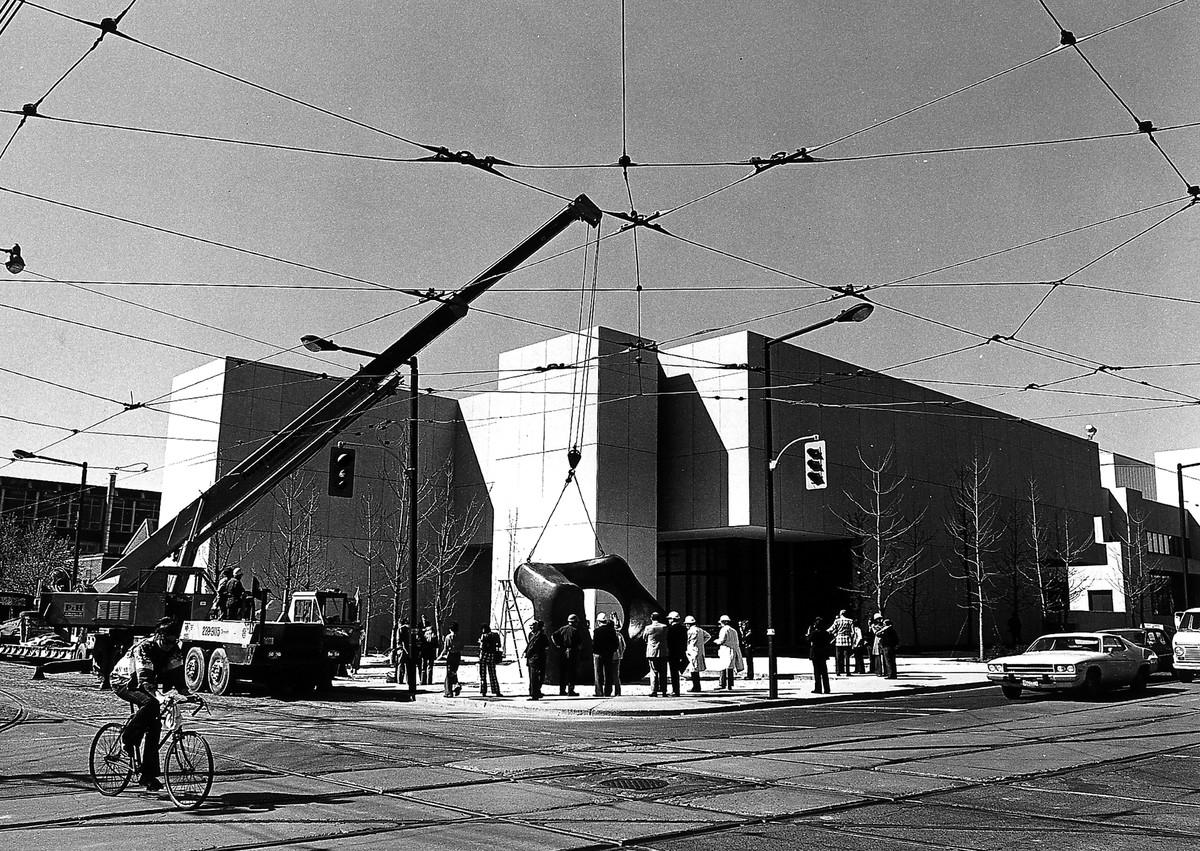

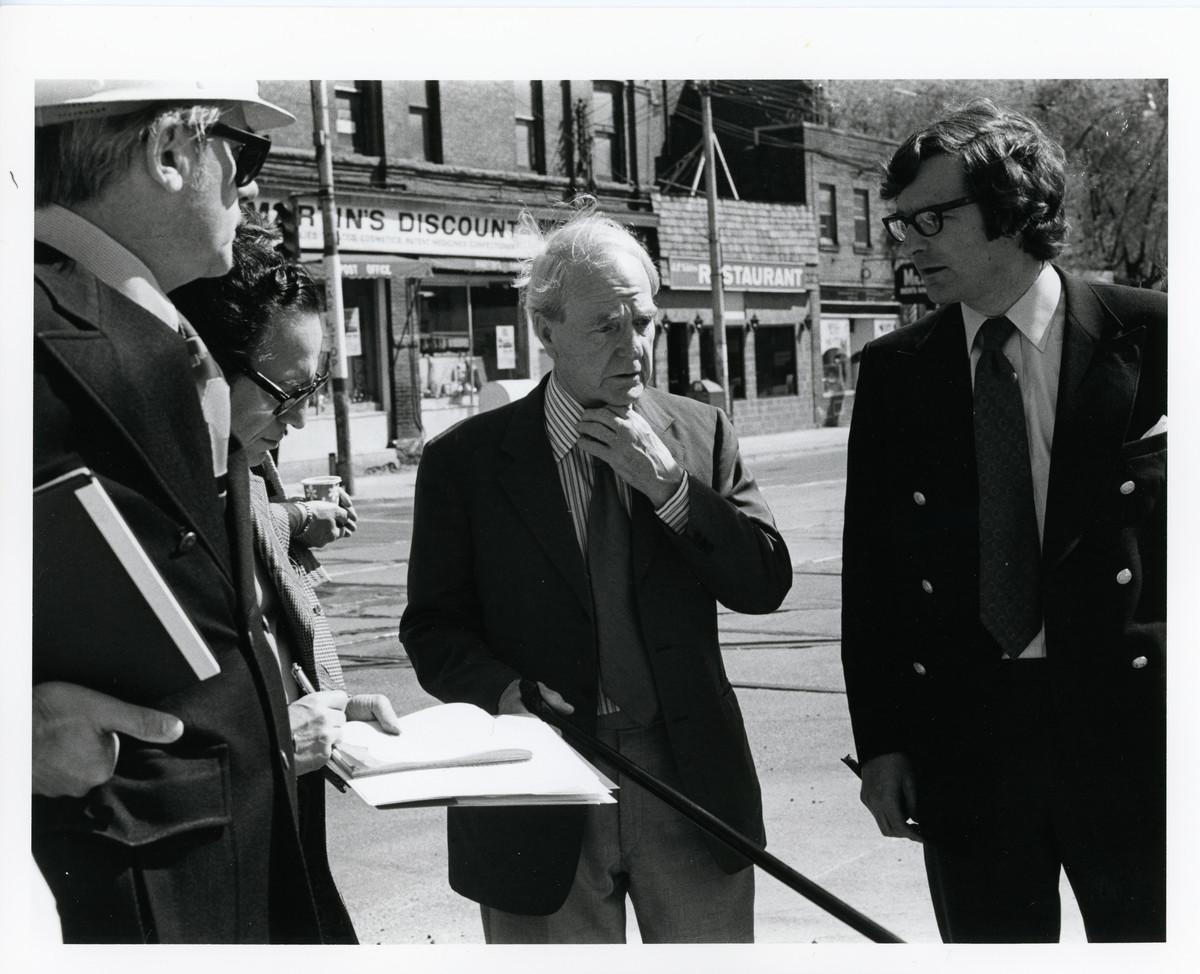
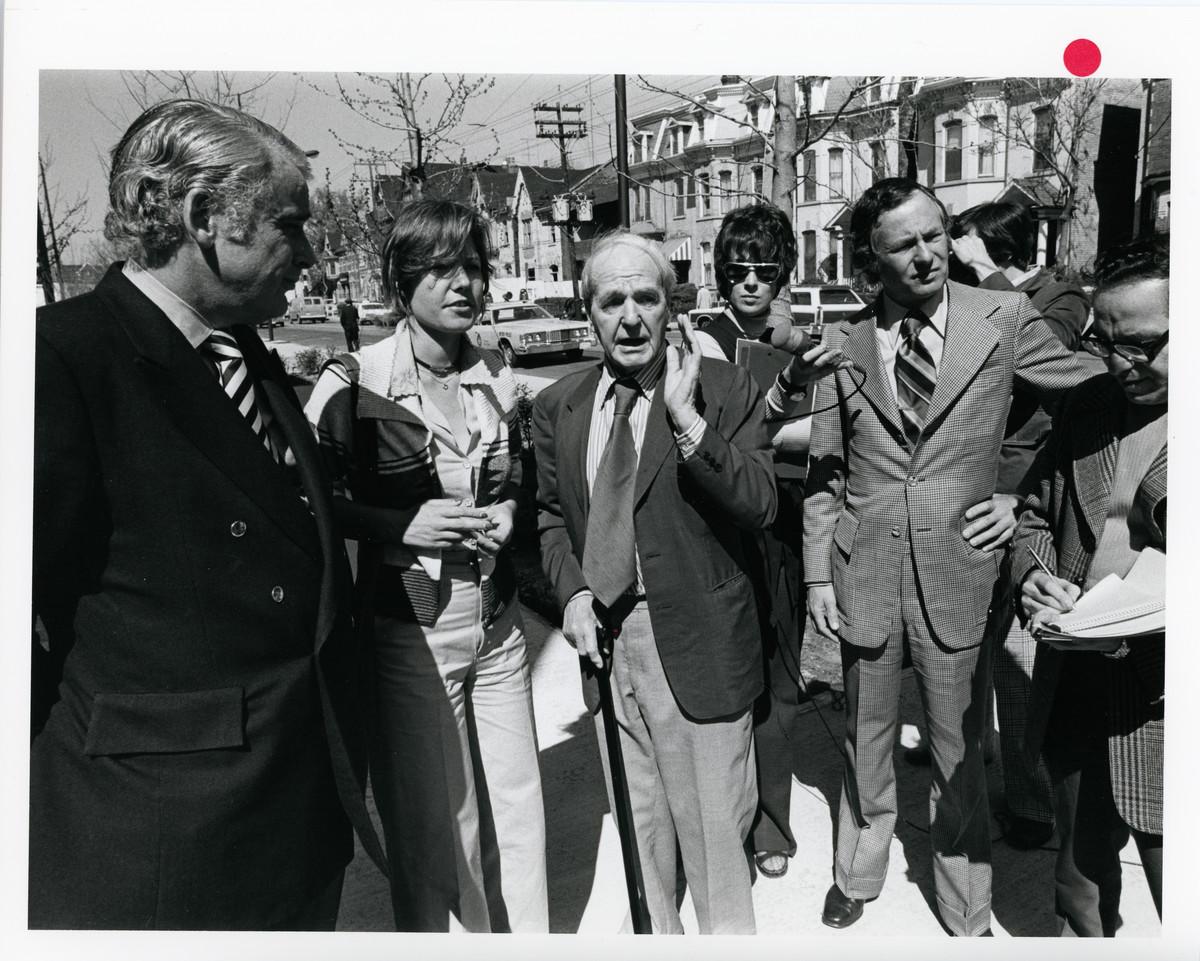

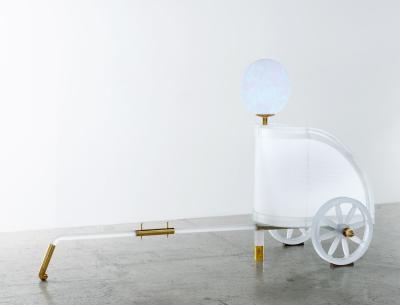
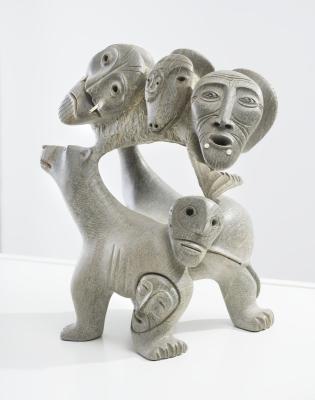


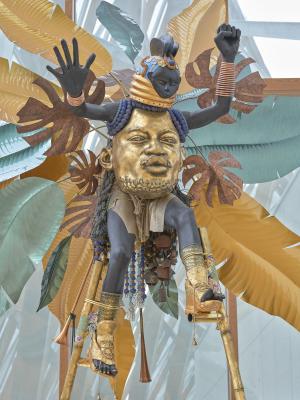


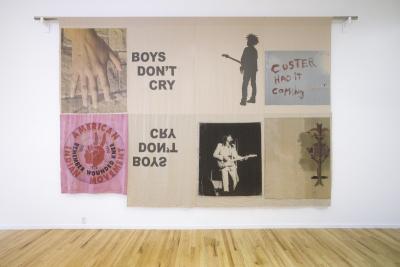
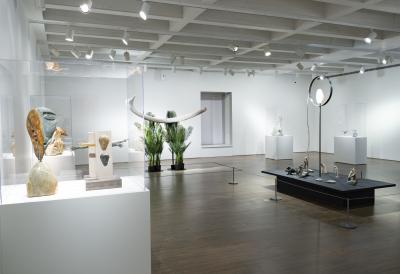
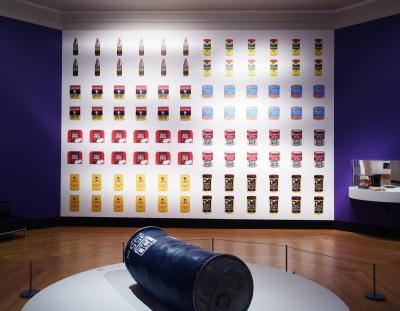

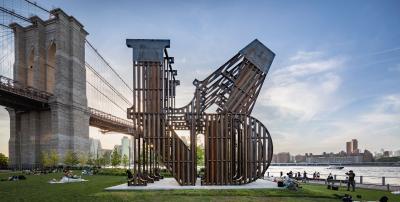
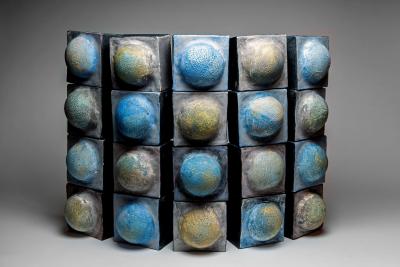
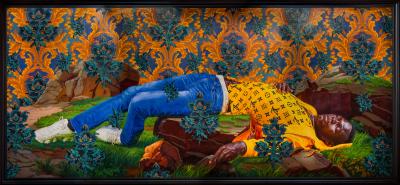
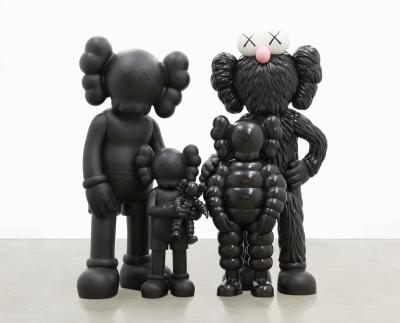
![Keith Haring in a Top Hat [Self-Portrait], (1989)](/sites/default/files/styles/image_small/public/2023-11/KHA-1626_representation_19435_original-Web%20and%20Standard%20PowerPoint.jpg?itok=MJgd2FZP)

